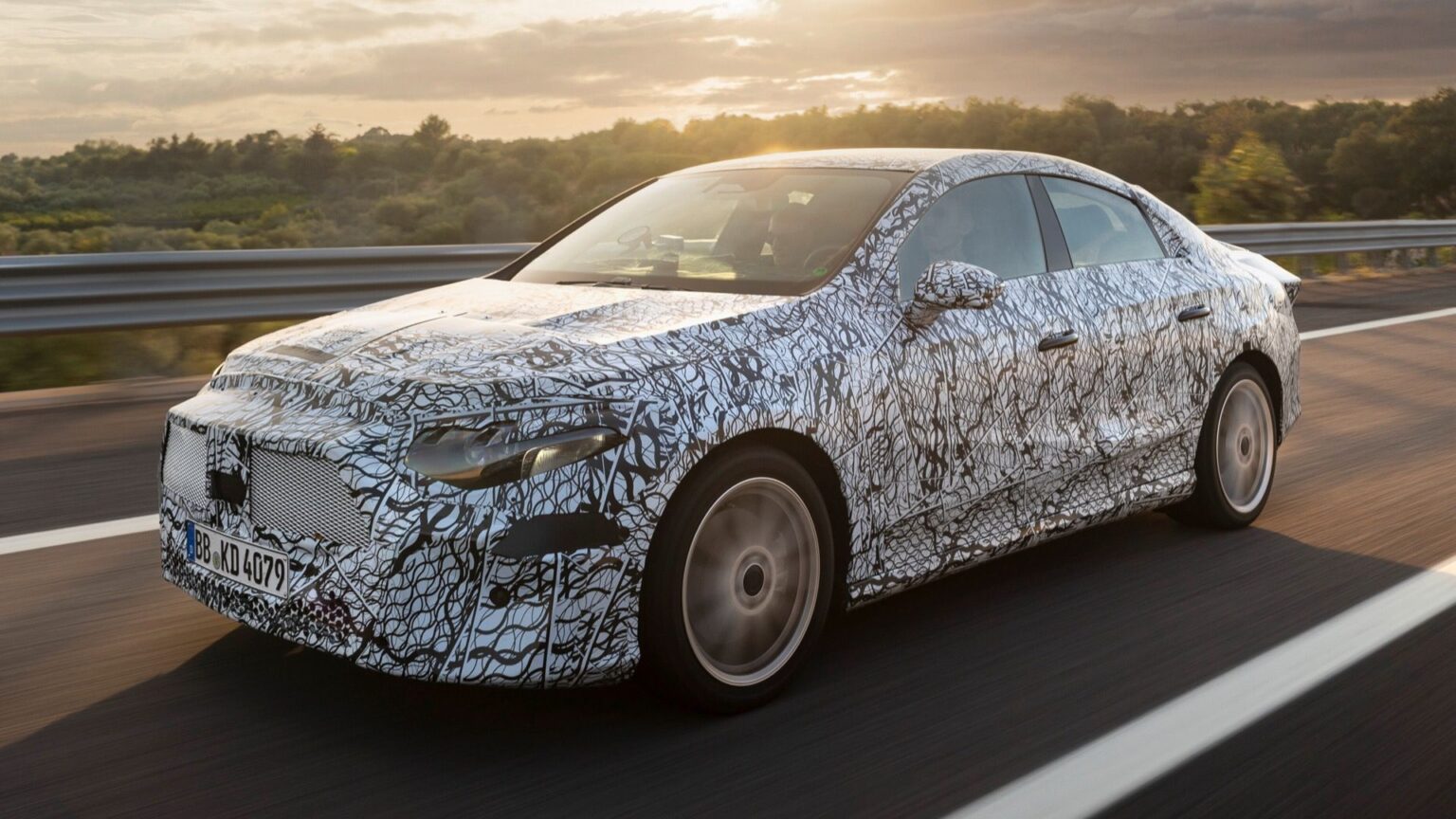Mercedes-Benz is preparing to launch its next-generation CLA-Class entry-level sedan, this time with electric and hybrid powertrains. The German automaker has shown off the CLA Concept, as well as a CLA prototype with CEO Ola Källenius behind the wheel showcasing the car’s design and driving dynamics. Despite its position at the bottom of the Mercedes lineup, Mercedes is still touting the CLA EV as the next big thing in the brand’s future of electrification, and has packed it full of the latest technology.
Much of the technology makes the CLA more efficient, employing learnings gained from the brand’s Vision EQXX concept. Other features simply make the CLA more convenient to use, especially when juicing up at a public charger. Here are some of the interesting technologies that make the Mercedes CLA EV a sign of things to come.
Mercedes-Benz Modular Architecture
The CLA EV will be the first model to use Mercedes’ latest platform, called Mercedes-Benz Modular Architecture (MMA). This “skateboard”-style chassis can underpin other vehicles, and, in the U.S., Mercedes intends to follow the CLA with two entry-level SUVs using the MMA platform.
Electric Drive Unit 2.0
Part of the MMA package is the Electric Drive Unit (EDU) 2.0. Like the MMA platform, the EDU 2.0 is also modular, making it a versatile solution for various output needs. The CLA will feature a 200-kilowatt (268-horsepower) drive unit on the rear axle, designed to be efficient and compact, with an integrated silicon-carbide inverter and transmission control. 4Matic all-wheel-drive models will get another drive unit up front. This 80-kW (70-horsepower) motor features a Disconnect Unit (DCU), allowing the car to disengage the front motor when not needed. Mercedes claims this reduces front axle losses by up to 90-percent and increases driving range.
That range, by the way, is about 466 miles on Europe’s generous WLTP testing cycle, and will probably be less (but still impressive) once the EPA submits its fuel economy and range figures for the U.S.
800-volt Electric Architecture
While range anxiety has been a barrier to EV adoption, charging times are a common complaint for drivers using public chargers. As such, more automakers are moving toward higher-voltage batteries for improved charging performance. With an 800-volt architecture, the CLA EV will be able to take advantage of 350-kilowatt DC fast chargers. With an impressive peak charging rate of 320 kilowatts, Mercedes says the CLA EV can replenish 186 miles of range in 10 minutes. That number will likely change when the EPA rates the CLA’s fuel economy for the U.S., but it should remain one of the fastest-charging EVs on the market, nonetheless. Pretty impressive for an entry model.
CCS And NACS Charge Ports
While many automakers are in the process of switching from CCS to the NACS charging standard made popular by Tesla, many still require an adapter when using the other kind of DC charger. Mercedes will put both charging standards under the same flap, making for an easy hookup regardless of what charging network you’re using.
Improved Battery Cell Chemistry
The CLA’s battery has updated cell chemistry with silicon oxide incorporated into the graphite anodes. This has allowed Mercedes to pack 20-percent more energy into the same amount of battery weight. Meanwhile, Mercedes has also managed to use less cobalt in its battery.
Two-Speed Transmission
While most EVs do away with a multi-speed transmission altogether, opting instead for a single reduction gear to transfer power from the motors to the wheels, a couple — namely the Porsche Taycan and Audi E-Tron GT — have decided to incorporate a two-speed transmission to improve acceleration and range. The Mercedes CLA EV follows in their tire tracks with a two-speed gearbox on the rear drive unit. This little transmission was part of the key to Mercedes setting a range record of 2,309 miles in 24 hours with the CLA prototype.
Standard Multi-source Heat Pump
is a great feature to have in an EV, especially when operating with ambient temperatures outside of the battery’s optimal range. The MMA platform gets a little more advanced with its heat pump. It uses a standard air-to-air heat pump that can draw excess heat from the ambient air, from the battery, and from the drive unit.
Read the full article here


